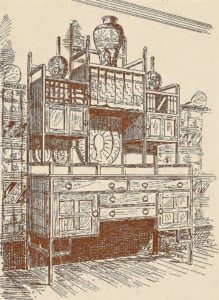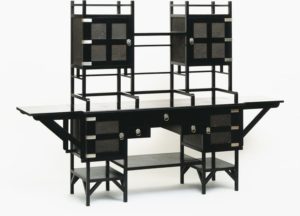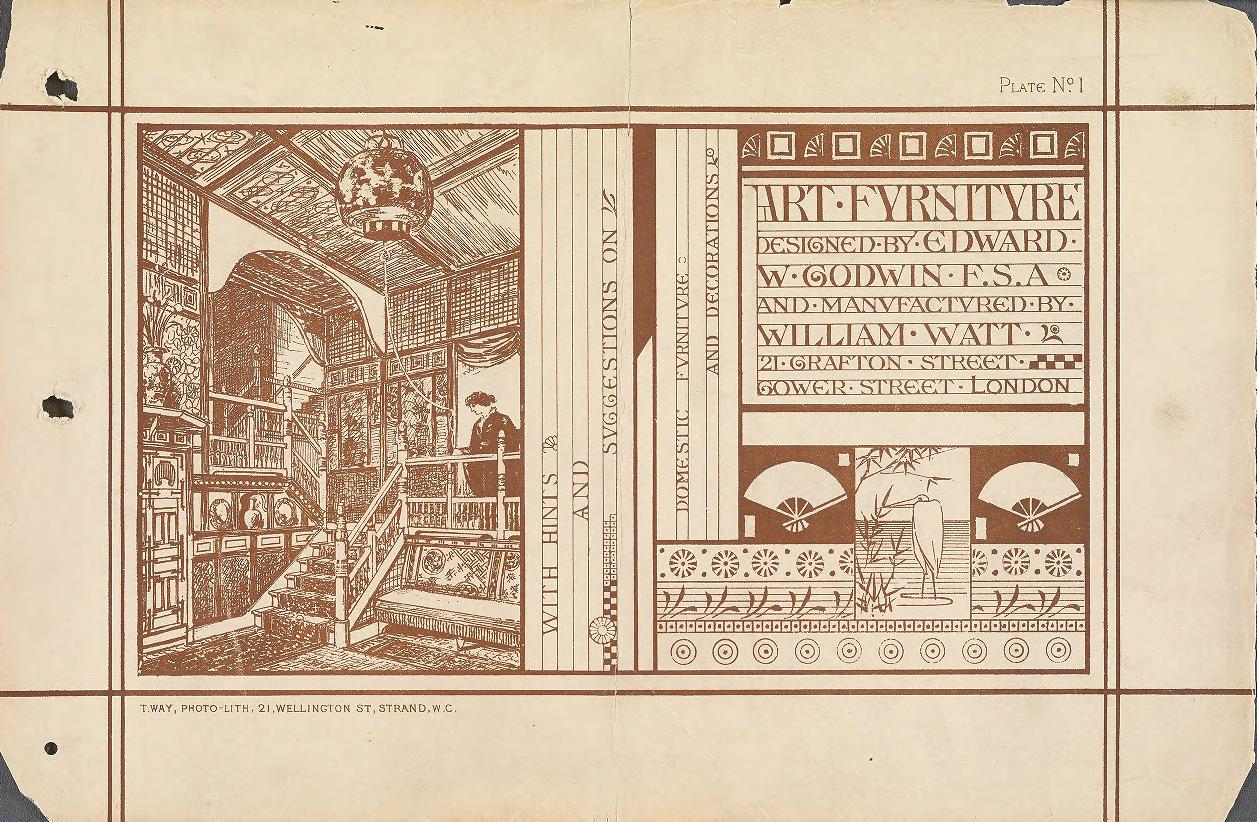In 1877, commercial designer and architect Edward William Godwin collaborated with furniture manufacturer William Watt to produce this trade catalogue held in the Cooper Hewitt Library.
Godwin was considered the most innovative designer of the Aesthetic Movement. A brief but pivotal moment in the history of the decorative arts, Aestheticism strove to bring art into everyday life, and represented a shift away from heavy Victorian ornamentation toward a simpler, more elegant and modern sensibility.
In the spirit of combining the useful and the beautiful, this catalogue not only offers furniture for sale, but is itself an aesthetic object, printed with sepia ink on toned paper, and designed to look like an artist’s sketchbook. Its frontispiece exhibits both Godwin’s passion for Japonisme and his desire to reimagine the English domestic interior.
On the right side of the catalogue’s cover, the self-consciously artistic layout combines a large exotic font with images and repeated ornamental patterns reminiscent of Japanese wood-block prints. Bold patches of flat color, arranged in an asymmetrical composition combine with crisp, linear elements and natural motifs, such as cranes, bamboo, fans and chrysanthemums.
The detailed interior on the left illustrates Godwin’s notion of domestic space as a total work of art. Harmonious and elegant, the room includes numerous functional items, such as built-in shelves and cupboards, moveable furniture and simple decorative touches. The female figure invites the viewer to imagine herself in the role of both decorator and consumer.
Of the hundreds of pieces of art furniture created by Godwin, the sideboard, with its slim lines, absence of turning or carving, and sparse ornamentation is considered his masterpiece.

Art Furniture- Buffet. Plate No. 4

Godwin Sideboard: Victoria and Albert Museum Circ.38: 1 to 5-1953
In the lightness and elegance of his furniture, Godwin foreshadowed the Modern movement, and his spare, abstract approach would reemerge in the efforts of such designers as Charles Rennie Mackintosh, Frank Lloyd Wright and Josef Hoffman.
